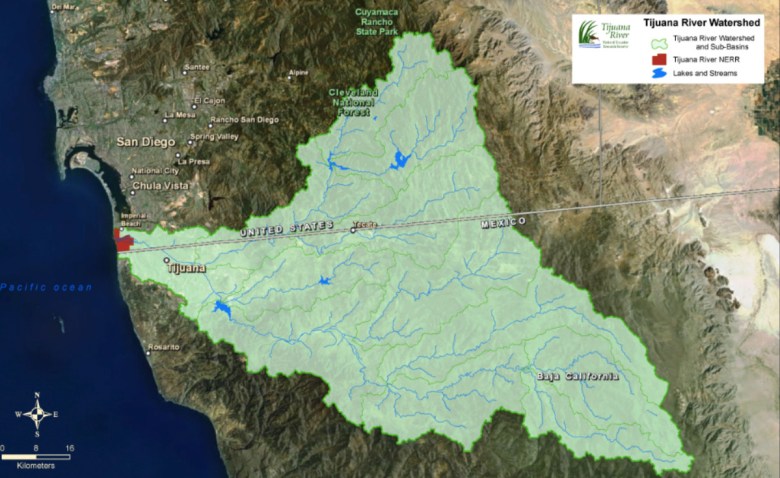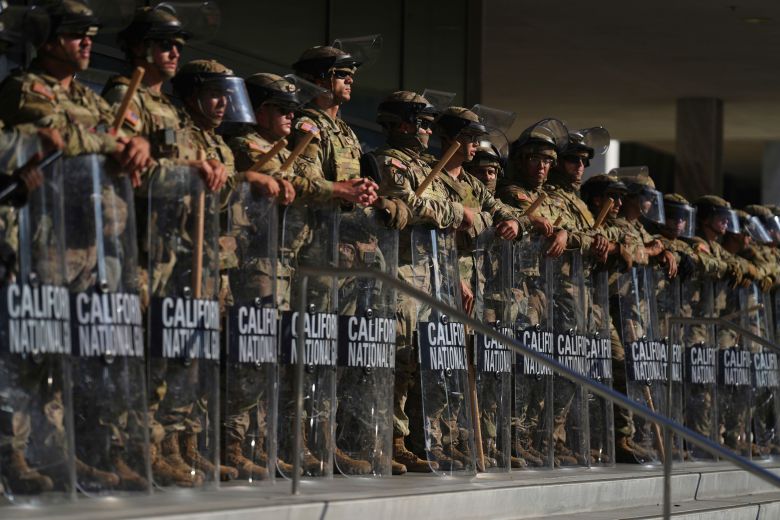The Border Chronicle was the original publication of this article. Republished with consent.
The governments of the United States and Mexico signed a memorandum of understanding on the Tijuana River on July 24. The river travels 120 miles from the Sierra de Jujurez in Baja California to its estuary in San Diego County, which is located south of Imperial Beach. Residents of Imperial Beach have been complaining and worried about their health for decades as a result of Tijuana’s untreated wastewater, which includes sewage and trash, flowing into the estuary.
In addition to a number of other initiatives, Mexico pledges to contribute $93 million toward infrastructure projects outlined in the 2022 agreement known as Minute 328. With an accelerated timeframe agreed upon by both governments, the projects are now expected to be finished by December 2027. Lee Zeldin, the administrator of the U.S. Environmental Protection Agency, described it as a permanent, 100% solution.
Having grown up in a neighborhood that overlooked the Tijuana River and currently residing in one that was constructed alongside its channelization, historian Marco Antonio Samaniego of the Autonomous University of Baja California has spent decades researching the river’s administration. In addition to serving on an advisory council for the International Boundary and Water Commission, he has written multiple papers about the history of the U.S.-Mexico border. Samaniego discussed the July deal and its role in the river’s lengthy, binational history in an interview with the Border Chronicle.
Q. How do you feel about the recently announced agreement?
A. I believe that their signing of a new contract is a good thing. In terms of engineering, what they are suggesting is important. I therefore see it favorably, and I hope they are able to finish it in the brief amount of time they have promised. It would be great by 2028. Since public works projects typically take longer than anticipated, I have my reservations. But if there is one thing that the United States and Mexico can agree on, it is water.
Q. Is it, as they say, a 100% permanent solution?
A. Politicians usually say that everything will be resolved by their deals. That’s what I’ve heard for decades regarding the Tijuana River. They have consistently taken significant but insufficient action. The pace of urban issues is far faster than that of diplomacy. It’s just a first step.
Why does Imperial Beach accumulate so much waste and trash?
The energy that draws, draws in, and moves everything around a river is considerably more than just water. It is the result of the regions it travels through. Anything people toss into or leave close by is picked up by a river. All of the debris it carries in this instance winds up in the estuary of the Tijuana River, which is a crucial habitat.
Distribute The Border Chronicle
Q. Mexico is expected to be more committed to the agreement than the US is. Why is that?
The Tijuana River flows more on the Mexican side but empties into the United States, which is the straightforward explanation for why it is more dependent on Mexico. Because of this, everything that occurs in Tijuana—and even worse, what occurs in the city—including garbage collection, the careful treatment of toxic waste, and canal maintenance, has an impact on Imperial Beach and the estuary of the Tijuana River.
Q. The United States is also involved at the same time.
Indeed. The Mexican government has a lenient attitude that permits aquiladoras to dispose of their garbage in the river.
Next comes migration. People who have been deported from the United States have been living beside the canal for forty years. I used to run along the canal when I was younger while they were building it. People were residing in the sewer drains, where they were subjected to various pollutants, diseases, and toxins. Even after forty years, nothing has changed.
Therefore, when Americans complain, I respond that while trash is collecting, it’s because people are living there, have no other place to live, were kicked out of the nation, and the countries haven’t reached a proper deal on migration. Rather, these people are left in the middle, living in cramped and cruel conditions due to a variety of incompatible political ideologies.
Q. At what point did this matter turn into a bilateral dispute?
The earliest records I could find of Imperial Beach residents complaining about trash date back to the 1930s. It started because the Tijuana riverbed was developed into a residential area in the 20th century. They constructed hundreds or even thousands of homes where none should have been, which led to a lot of pollution and social, political, and even religious issues. Every piece of material that arrived at Imperial Beach came from extremely low-income households.
What actions did the countries ultimately decide to take? Which local movements were at play?
A binational act to channelize the river was signed in 1965. They began using bulldozers to remove people from the region. However, the floods of 1978 and 1980, which forced over 50,000 people to leave, were what actually drove them out. Although the exact number of deaths during those times is unknown, it was over 100.
The Mexican Communist Party and the [conservative] National Action Party were among the several organizations that opposed the deportation. However, the floodwaters eventually revealed that the individuals were in danger. Following the floods, the focus of the movements changed to making sure that there was housing available for people to relocate to. It was the maquiladora boom by that time. People were forced to reside in industrial areas by the government, so near to the plants that they didn’t even need to take a bus to get to work.
Much of Tijuana, including the area where I am sitting right now, has become urbanized thanks to channelization. They caused gentrification and raised the value of numerous neighborhoods by constructing the hospital towers that are currently very popular, rebuilding parks, and building the Tijuana Cultural Center. For this reason, I often argue that the city’s shape comes from the river.
Meanwhile, on the U.S. side, there was opposition to the channelization for the damage it would do to the Tijuana River estuary. Because of their efforts, the estuary was granted federal and state protection. It s important to note that this activism also critiques California the activists pointed out the importance of conserving the last remaining estuary in the state.
Get neighborhood news in your inbox. It’s free and enlightening.
Become one of the 20,000+ individuals who receive breaking news alerts and the Times of San Diego in their inbox every day at 8 a.m.
Weekly updates from San Diego communities have also been provided! You acknowledge and agree to the terms by clicking “Sign Up.” Choose from the options below.
In the 1980s, the topic arose again, because there s a proposal to build a third port of entry at Playas de Tijuana, which the people of Imperial Beach opposed. In the 1990s, the topic exploded. Many binational groups took up activism, and the PITAR plant [Planta Internacional de Aguas Residuales Tijuana, known asSouth Bay International Wastewater Treatment Plantin English] was built. The wastewater from Tijuana goes there, it s cleaned, and it s returned to Tijuana. We pay the U.S. when I pay my water bill in Tijuana, I m also paying for that process. The idea is that the treated water should be used for parks and gardens, but there aren t actually enough parks and gardens, so for 30 years we ve sent it back into the sea. In the new agreement, they say they are going to double the plant s capacity. That plan is 15 years old. It s nothing new.
Q. What measures are still necessary?
I ve used an ugly phrase to describe the city where I was born and where I liveHay una Tijuana hedionda[There s a Tijuana that stinks]. There s a Tijuana that was built quickly, and because of that rapid growth, has low-quality piping, and those pipes are causing huge problems. You can t see it from above, so no one knows what s going on. But below cities, there s an explanation for everything you see above. So the city needs to be renovated from below. They are doing that. It s not new, but it takes years and is expensive.
Another issue is trash collection. There are low-income neighborhoods without trash collection. That means you re leaving mounds of trash everywhere, and sooner or later that trash is going to end up in the canal.
Finally, I ve never seen a real campaign in Mexico to help people understand the importance of the Tijuana River estuary. As long as there isn t awareness among our authorities and amongtijuanensesabout the significance of the river and its estuary in environmental terms, and the importance of the flora and fauna, people won t understand that they shouldn t throw trash into the canal.
Sometimes people want to say,Pinches gringos!Throw all the trash at them!Viva M xico!But that doesn t solve anything. The estuary is part of us, since everything nonhuman is part of us. The fact that there are animals in the estuary on the U.S. side is good for the Mexican side. The problem isn t Trump. It isn t any Mexican president. The problem is trash, the problem is taking care of the natural world, and it s about creating the conditions for a rich flora and fauna that make us love the natural world.
This interview has been translated and edited for length and clarity.
Caroline Traceyis a journalist with The Border Chronicle, which publishes original, on-the-ground reporting, analysis, and commentary about the U.S. Mexico border.

 by
by 

